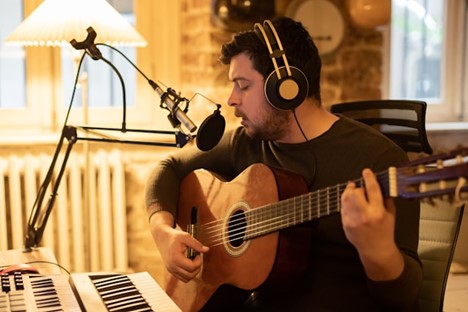The world of popular music is always changing, and vocal techniques are no exception. From the early days of jazz and blues to the digital age of autotune and vocal effects, singers have continually adapted their styles and techniques to fit the fluctuating landscape of music. James Snyder of Broadway explains that this evolution not only reflects advancements in technology but also shifts in cultural and musical trends.
Early Influences: Jazz and Blues
The roots of popular music can be traced back to the early 20th century with jazz and blues. Singers like Bessie Smith and Billie Holiday brought raw emotion and unique vocal phrasing to their performances, laying the groundwork for future vocalists. Techniques such as vibrato, scooping, and bending notes became hallmarks of these genres. These singers often performed with live bands, requiring them to develop powerful, resonant voices to project over the instruments.
The Rise of Rock and Roll
The 1950s and 1960s saw the rise of rock and roll, with vocalists like Elvis Presley and Little Richard at the forefront. This era introduced more aggressive and energetic vocal styles. Techniques such as the “rock and roll scream,” characterized by high-pitched, intense vocal delivery, became popular. Singers like James Brown incorporated elements of gospel and rhythm and blues, showcasing a range of vocal techniques including call-and-response patterns and dynamic shifts in volume and intensity.
The Advent of the Studio Era
The 1960s and 1970s brought significant advancements in recording technology, allowing for more experimentation with vocal techniques. The Beatles, for example, utilized double-tracking, a technique where the same vocal line is recorded twice to create a richer sound. This period also saw the emergence of iconic vocalists like Freddie Mercury and Robert Plant, who pushed the boundaries of vocal range and power. Mercury’s use of operatic techniques and Plant’s powerful, blues-infused voice set new standards for rock vocalists.
The Influence of Pop and R&B
The 1980s and 1990s saw the rise of pop and R&B, with artists like Whitney Houston and Mariah Carey dominating the charts. These singers brought a new level of technical proficiency to popular music. Whitney Houston’s use of melisma, the technique of singing multiple notes within a single syllable, became a defining feature of her style. Mariah Carey’s five-octave vocal range and ability to hit whistle notes showcased the possibilities of the human voice in pop music.

The Digital Age and Autotune
The late 1990s and 2000s ushered in the digital age, bringing with it the widespread use of autotune and other vocal effects. While initially used to correct pitch, autotune quickly became a stylistic choice for many artists. Cher’s 1998 hit “Believe” is often credited with popularizing the use of autotune as a vocal effect. In the 2000s, artists like T-Pain took this to new levels, using autotune to create distinctive, robotic vocal sounds. This period also saw the rise of vocal layering and harmonization, made easier by digital recording technology.
Modern Innovations and Hybridity
Today, vocal techniques in popular music are more diverse and innovative than ever. Artists draw from a wide range of influences and technologies to create unique vocal styles. The use of vocal loops and samples has become commonplace, allowing singers to build complex, layered tracks. Beatboxing and vocal percussion have also gained popularity, adding rhythmic elements to vocal performances.
Moreover, modern artists often blend techniques from various genres. For instance, singers like Beyoncé and Adele combine elements of pop, R&B, and gospel in their vocal styles. Beyoncé’s use of runs and riffs showcases her technical prowess, while Adele’s powerful, emotive delivery draws from traditional soul and blues influences.
The Role of Technology in Shaping Vocal Techniques
Technology continues to play a crucial role in the evolution of vocal techniques. Advanced recording software and digital effects allow for greater experimentation and precision. Vocal training apps and online tutorials have made high-quality vocal instruction more accessible, helping singers develop their skills and explore new techniques. Additionally, live performance technologies, such as in-ear monitors and advanced microphone systems, enable singers to deliver more polished performances.
Conclusion
The evolution of vocal techniques in popular music reflects broader trends in technology, culture, and musical innovation. From the emotive phrasing of early jazz and blues to the autotuned sounds of the digital age, singers have continually adapted their styles to fit the changing landscape of popular music. As technology continues to advance and new musical influences emerge, the possibilities for vocal techniques are limitless. Understanding this evolution not only enriches our appreciation of popular music but also inspires future generations of singers to push the boundaries of what the human voice can achieve.

